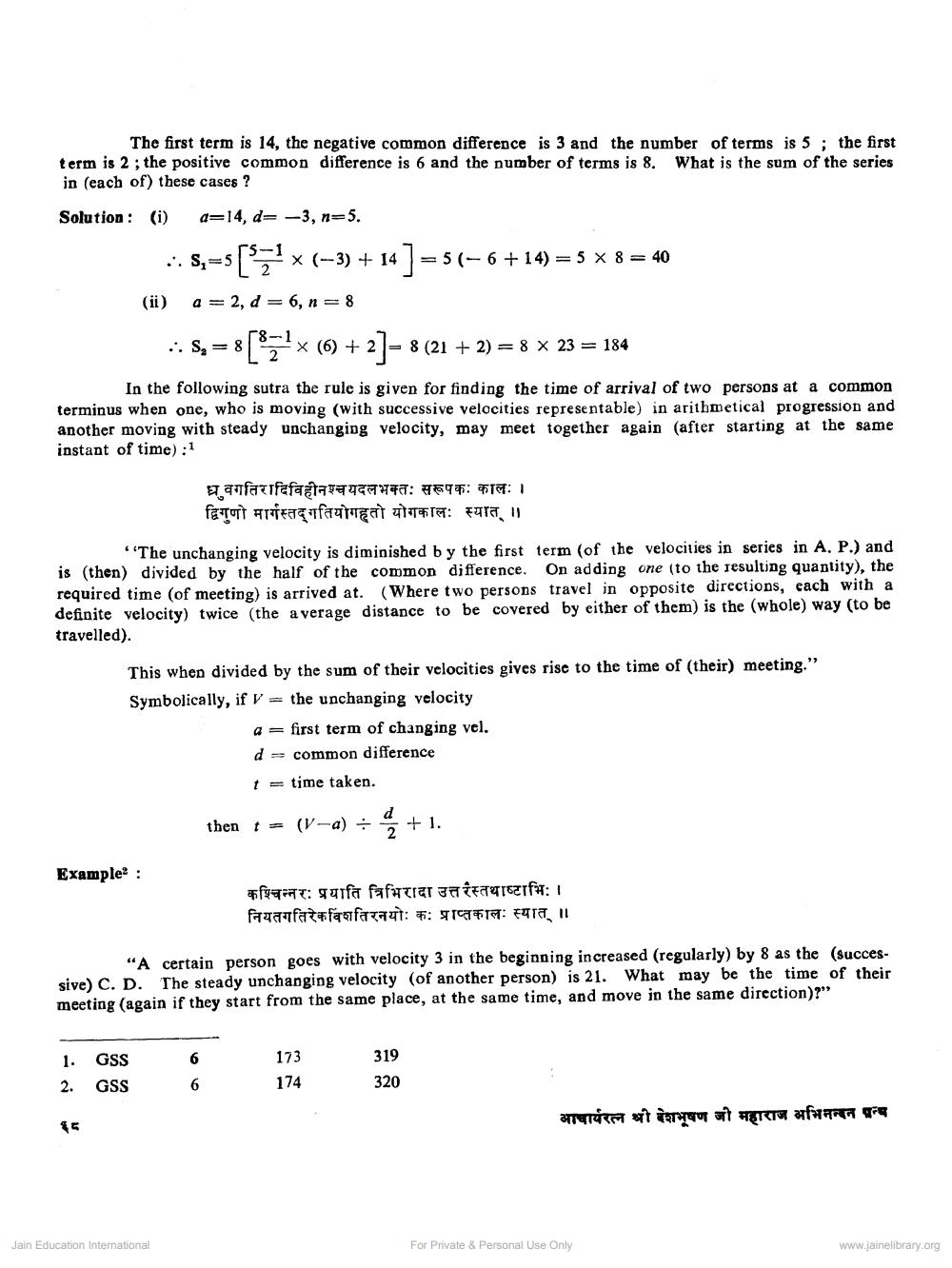________________
The first term is 14, the negative common difference is 3 and the number of terms is 5 : the first term is 2 ; the positive common difference is 6 and the number of terms is 8. What is the sum of the series in (each of) these cases ?
Solution: (i)
a=14, d=
-3, n=5.
.: S=$(${1x (3) + 14 ] =51–6 +14) = 5 x 8 = 40 (ii) a = 2, d = 6, n=8
.: S = 8 [8;1x (6) + 27-8 (21 + 2) = 8 x 23 = 184
In the following sutra the rule is given for finding the time of arrival of two persons at a common terminus when one, who is moving (with successive velocities representable) in arithmetical progression and another moving with steady unchanging velocity, may meet together again (after starting at the same instant of time):1
ध्रुवगतिरादिविहीनश्चयदलभक्तः सरूपकः कालः । द्विगुणो मार्गस्तद्गतियोगहृतो योगकालः स्यात् ॥
"The unchanging velocity is diminished by the first term (of the velocities in series in A. P.) and is (then) divided by the half of the common difference. On adding one to the resulting quantity), the required time (of meeting) is arrived at. (Where two persons travel in opposite directions, each with a definite velocity) twice (the average distance to be covered by either of them) is the (whole) way (to be travelled).
This when divided by the sum of their velocities gives rise to the time of (their) meeting." Symbolically, if V = the unchanging velocity
a = first term of changing vel. d = common difference t = time taken.
then
t =
(V-a
Example? :
कश्चिन्नरः प्रयाति त्रिभिरादा उत्तरैस्तथाष्टाभिः । नियतगतिरेकविंशतिरनयोः कः प्राप्तकालः स्यात् ॥
"A certain person goes with velocity 3 in the beginning increased (regularly) by 8 as the successive) C. D. The steady unchanging velocity (of another person) is 21. What may be the time of their meeting (again if they start from the same place, at the same time, and move in the same direction)?"
1. GSS 2. GSS
6 6
173 174
319 320
आचार्यरत्न श्री वेशभूषण जी महाराज अभिनन्दन पन्य
Jain Education International
For Private & Personal Use Only
www.jainelibrary.org




